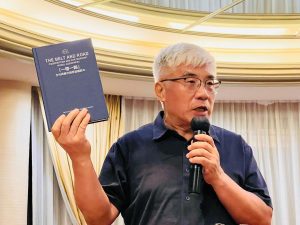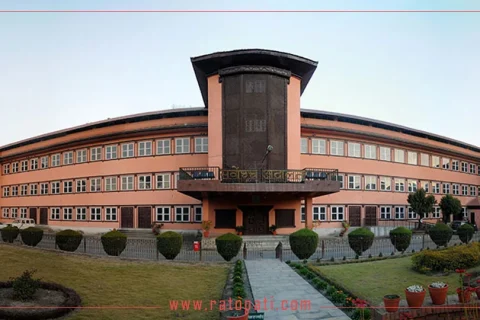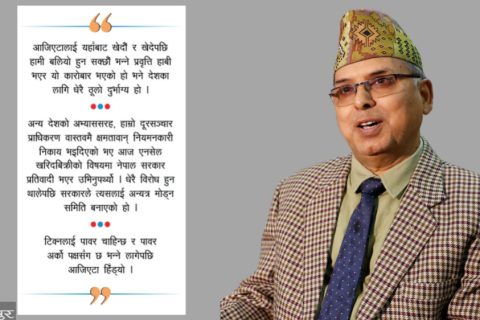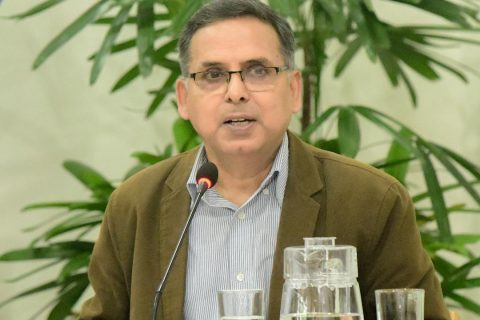
(This is excerpt of opening remarks to be given by Dr Bipin Adhikari as Chairperson of Nepal Constitution Foundation at a bill review programme on the Bill of Mediation Act to be organized in May 2011)
This Bill has been drafted to provide mediation as a quick, simple and economic medium of conflict resolution, and to increase the general public’s access to justice. Here, “mediation” has been defined as a process of conflict/dispute resolution through the assistance of the mediator. So the Act aims at promoting mediation as an alternative dispute resolution mechanism.
Section 3 of the Bill declares that where there is an agreement providing mediation as a mode of conflict resolution then the conflict has to be resolved according to the procedure prescribed by the agreement. Regardless of whether legal proceedings are underway or not, if a settlement is possible under the relevant law, then the parties may agree to follow the procedure provided by the Act. If a case has been filed in a court and if the parties wish to resolve the dispute through mediation, they can make an application to the court which is mandated to allow the application regardless of the state of the proceedings. The court may order suo motu for mediation provided the parties agree. Section 4 provides that whenever the mediator is not provided for in the agreement, the parties shall choose mediation by mutual consent. According to Section 5, the parties can either appoint only one mediator, or appoint one each and then let the two appoint the third one. The court can appoint the mediator/s if the parties are unable to do so.
Section 11 provides that if the mediator is unable to resolve the conflict in an unbiased matter or such a situation is foreseeable, then the mediator must inform the court. Section 12 lays down the duties of the mediator- unbiased approach, no prejudice, cannot coerce any party into accepting the solution, cannot have any financial ties with any of the involved parties, has to follow the procedure prescribed by law etc. Mediator can be removed for various reasons as mentioned in Section 13. Section 16 requires a written settlement signed by the parties for the mediation to be complete. If mediation is conducted in a case where the lower court or quasi-judicial authority has given a prison and/or fine sentence, then the court can suspend or reduce the sentence. The mediator is required to send a report to the judicial authority within seven days after the process has ended under Section 18.
Section 19 provides that once a person has acted as a mediator he cannot be involved in any case involving the same parties regarding the same subject matter. Section 22 prescribes the qualifications of a mediator. Section 23 makes it possible to register an organization seeking to conduct mediation. Section 26 establishes a Mediation Council to reform, consolidate and regulate the process of mediation. Its function, duties and powers are listed in Section 27. A monitoring committee is formed under Section 29 to monitor the mediation related activities.
The Bill includes two types of mediation – community mediation and court referred mediation. Section 33 enables community based mechanisms to conduct mediation. The mediation group includes respect people of the community, people chosen by community based institutions, social workers and teachers or professors. So this form of mediation is facilitative in contrast with the court referred one which is evaluative. Community mediation can seek assistance from the local authorities. Section 38 mentions that none of the evidence used in court proceedings shall be applicable in mediation proceeding. According to Section 39 the results of a mediation proceeding is legally binding.
It is notable that mediation is not used in criminal cases, cases requiring legal interpretation, cases involving setting a precedent, cases where the results affect the rights of a third party. Section 3 does not clearly explain what kinds of conflicts are liable to be resolved by mediation. Therefore, a clear demarcation is required in this matter. Regarding community mediation, the qualification of such mediators is not prescribed. Being well respected or a teacher cannot be held to qualify a person for the task of mediation. Therefore minimum qualifications must be prescribed and a separate agency must look into community based mediation. Letting community gathering to set the mediation procedure is also not desirable because there is no guarantee that they have the requisite knowledge regarding mediation or will formulate fair grounds of mediation. It does not ensure the fair treatment of the weaker sections of society like women, children and marginalized communities.
The council has been given the power to monitor the implementation of code of conduct by the mediators and take action when it is not followed. But it is not mentioned what kind of actions the council can take. This part needs to be clarified. The Bill is silent regarding how to make the council reach the district level authorities. The functions and the powers of the monitoring committee must also be clarified.
It is advisable for the critiques to look at the Uniform Mediation Act prepared by the American Bar Association Section of Dispute Resolution, the National Conference of Commissioners on Uniform State Laws available at http://www.pon.harvard.edu/guests/uma/ for standard patterns on some common issues. This Act promotes the increasingly important use of mediation as an appropriate means of dispute resolution, while also protecting the rights of participants in the mediation processes. The protections of the Act will be available to mediation participants in almost all mediations in which the parties agreed to mediation or are directed into mediation by a court or other governmental entity. The only mediations that the Act will not apply to are those involving labor unions, student peer mediations, and judicial settlement conferences. (Section 3) The Act has important provisions on median privilege, party accompaniment (the ability to be accompanied by a friend, family member, or lawyer, which is particularly important when a party is compelled into a mediation by a court or other governmental entity. (Section 10), and disclosure of conflicts of interest.
This Bill marks an attempt to promote alternate dispute resolution. While the effort is commendable there are many improvements that can be made in the Act.









